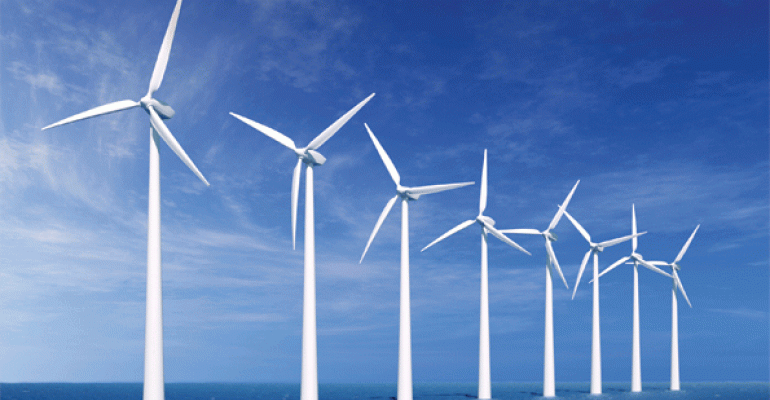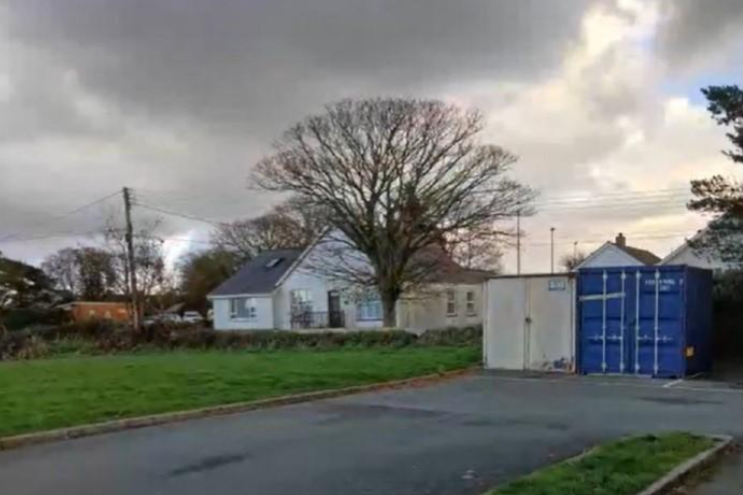Climate
Global floating offshore wind project pipeline grows by one-third over 12 months

A NEW report published today by RenewableUK shows that the total pipeline of floating offshore wind projects has grown significantly in the last 12 months in terms of capacity from 185 gigawatts a year ago to 244GW now – a 32% increase.
The number of projects has increased globally during that time from 230 to 285. The pipeline includes projects at any stage: fully operational, under construction, approved, in the planning system awaiting a decision or at an early stage of development.
The EnergyPulse Insights report was compiled by RenewableUK’s data analysts to coincide with the opening of our 2-day Floating Offshore Wind 2023 conference and exhibition in Aberdeen.
So far, 227 megawatts of floating wind are fully operational across 14 projects in 7 countries. Norway has the most with 94MW across 3 projects. The UK is second with 80MW (2 projects), Portugal has 25MW (1 project) and China is fourth with 19MW across 3 projects. Japan has 5MW (2 projects), Spain 2.225MW (2 projects) and France 2MW (1 project).
Globally, 46MW are under construction (3 projects), 576MW are consented or in the pre-construction phase (11 projects), 68GW are in the planning system or have a lease agreement (80 projects), and 175GW are in early development or applying for a lease (177 projects).

Nearly two-thirds of floating wind capacity announced so far worldwide are being developed in European waters (160GW), 14% is in the UK (35GW – of which 29GW is in Scottish waters). Outside Europe, projects are being developed mainly off the west coast of the USA, the southeast coast of Australia and South Korea.
Although Italy has the largest project pipeline (40,071MW), nearly all its 47 projects are at an early stage of development, with only one (90MW) submitted into the planning system so far.
Floating Offshore Wind Total Portfolio By Country (MW)
The report also shows that demand for floating foundations is expected to ramp up fast, with the potential for 472 in the UK by the end of 2032. There could be 1,369 floating foundations in Europe and 1,924 for projects globally by the end of 2032.
RenewableUK predicts that floating wind will represent well over half of the UK’s offshore wind generation by 2050, generating around £43.6bn in economic value and more than 29,000 jobs. It will also play a critical role in regenerating our coastal communities; with £4bn required to transform up to eleven ports across the UK into industrial hubs for mass roll-out of floating wind by the turn of the decade. There is up to £3.6bn in development funds ready to be released across 24GW of floating capacity with leasing secured in UK waters.
RenewableUK believes that the Government’s target of reaching 5GW of floating wind in UK waters by 2030 remains achievable, but the next CfD auction and future rounds must be underpinned by sustainable parameters in order to maximise deployment, drive down costs and incentivise investment in domestic supply chains. This year’s Contracts for Difference (CfD) auction failed to secure any new floating wind capacity, despite 250MW of floating wind capacity being shovel-ready.
RenewableUK’s Chief Executive Dan McGrail, Co-Chair the Floating Wind Taskforce said:
“This report shows that although the UK is a world leader in floating wind, other countries are eyeing the massive economic opportunity offered by this innovative technology and are determined to get a slice of the action. The international competition for investment is intensifying rapidly.
“We urgently need a step-change from our partners in Government to ensure that this cutting-edge industry can attract billions in investment to boost deployment and build up new supply chains, rather than focussing solely on a race to the bottom on prices.
“To ensure that the UK seizes the industrial benefits of developing state-of-the-art technology and revitalising ports around the country, we need to see sustainable prices to enable stepping-stone projects to go ahead in a successful auction next year, and every year going forward. Leveraging these projects will enable us to replicate the cost reductions we’ve seen in fixed-foundation offshore wind, as well as catalysing supply chain development. We’re determined to make the 2020s a decade of acceleration for floating wind”.
Climate
Urgent calls for action on Pembroke Commons flooding

TWO PEMBROKESHIRE councillors have submitted an urgent call for action following recent heavy flooding in parts of Pembroke.
Pembroke councillors Aaron Carey and Jonathan Grimes have submitted an urgent notice of motion ahead of tomorrow’s December 12 meeting of Pembrokeshire County Council following heavy flooding in the town’s Commons and Castle Pond area.
The notice of motion covers six points.
“That this council notes with concern the repeated and increasingly severe flooding experienced in our coastal, estuarial and river-fringe communities over recent weeks — in particular the flooding events affecting the Commons/Castle Pond area.
“That the council further notes that, according to correspondence from the Coastal, Rivers & Drainage Team Manager, the tipping gate at the barrage remains out of operation until mid-January due to mechanical issues; meanwhile high tide, heavy rain, wind-driven tidal surges and overspill at the sluice have combined to overwhelm the drainage/outfall infrastructure.
“That we recognise the current maintenance schedule (delayed till after the summer season) and the justification given — but further that such planning failed to foresee the likelihood of severe winter storm and surge events, which climate change makes more frequent and more intense.
“That this council therefore calls on the Cabinet to commission an urgent review of:
- The adequacy of the current drainage/outfall and tidal-sluice infrastructure (barrage tipping gate, sluice/sluice-valve, flap valve, outfall capacity) for current and projected climate/tide conditions.
- The maintenance scheduling policy for coastal and estuarial flood-risk assets, with a view to ensuring critical maintenance is completed before winter high-tide / storm-surge season, rather than — as at present — being delayed until after summer for ‘recreational / biodiversity’ reasons.
“That, pending the outcome of the review, the council should allocate appropriate emergency capital funding to remediate the barrages / sluices / outfalls at risk of failure or blockage — to safeguard residents, properties, highways and public amenities from further flooding.
“That, further, this council resolves to publish a public flood-resilience plan for the county, identifying all coastal and river-fringe ‘hotspots,’ maintenance schedules, responsible teams, and a transparent timeline for upgrades or remedial works — so residents have clarity and confidence in flood prevention measures.”
The submission also includes a question for Cabinet Member Cllr Rhys Sinnett.
“In light of the repeated flooding events across the county – including the recent overflow at Castle Pond and the acknowledgement by your own Coastal, Rivers & Drainage Team that the barrage tipping gate remains inoperable until mid-January can you explain what assessment has been made of the adequacy of our tidal outfall infrastructure in the face of current and projected future storm surges and sea-level rise?
“If no such assessment has yet been undertaken, will you commit now to commissioning an immediate structural and risk-capacity audit, with a report to full council within three months, and with proposals for funding any remedial works required — to avoid recurring damage and disruption to residents, highways, and public amenities?”
A Pembrokeshire County Council spokesman has confirmed the 11th hour call will be heard by full council tomorrow.
Image: Martin Cavaney
Climate
UK marks 25 years since first offshore wind farm began generating power

Sector now powers millions of homes and supports 40,000 jobs
THE UK today (Dec 8) marks a significant milestone: 25 years since the country’s first offshore wind farm began generating electricity. Blyth Offshore Wind Farm, built off the Northumberland coast in 2000, consisted of just two turbines producing four megawatts of power — enough for three thousand homes — and laid the foundations for what has become one of the UK’s most important energy industries.
In the space of a single generation, offshore wind has grown into the UK’s largest source of clean electricity. In 2024 it provided more than thirty-four per cent of all renewable power and generated a record seventeen per cent of the UK’s electricity overall, totalling 48.5 terawatt hours. The current fleet has a combined capacity equivalent to five large nuclear power stations.
Across UK waters, 2,878 turbines are now in operation — ten floating and 2,868 fixed — with a total generating capacity of 16.1 gigawatts. That is enough to power more than sixteen million homes each year. Industry estimates suggest that, without this development, the UK would have had to burn an additional twenty million tonnes of gas over the past twenty-five years, producing more than sixty million tonnes of CO₂.
The sector’s growth has also reshaped the economy. Nearly two thousand companies now operate within the UK wind supply chain, including one hundred and sixty factories. Their combined activity is forecast to contribute £18.2bn to the UK economy over the next decade. Around forty thousand jobs are currently supported by offshore wind — a figure projected to rise to ninety-four thousand by 2030.
Construction is accelerating. More than 7.5GW of new offshore wind is already being built and is due to become fully operational within the next two years, with a further 22GW consented through to 2033.
‘Britain is once again leading the world in clean power’
Energy Minister Michael Shanks MP said: “Twenty-five years after the first offshore wind turbines began to turn, Britain is once again leading the world in clean homegrown power. Offshore wind is at the heart of our 2030 mission – helping us reduce our dependence on volatile fossil fuel markets, lower bills for good, and support one hundred thousand jobs by 2030.”
RenewableUK’s Deputy Chief Executive Jane Cooper said the sector’s progress had brought “jobs, investment, energy security, and environmental benefits in equal measure,” adding that next month’s clean power auction could secure a record amount of new offshore capacity. “A consistent pipeline of projects is vital to trigger new investment in factories and supply chain companies,” she said.
Julia Rose, Head of Offshore Wind at The Crown Estate, said the UK’s first 25 years demonstrated “the transformative power of collaboration and strategic vision,” noting that 45 operational wind farms are now in UK waters with a 95GW development pipeline. The Crown Estate plans to bring a further 20–30GW of new leasing opportunities to market by 2030.
Ed Daniels, CEO of Venterra Group, highlighted the role of the UK’s supply chain: “Offshore wind’s success has created tens of thousands of skilled jobs, rejuvenated coastal communities and established the UK as a global exporter of expertise. Continued investment is essential to deliver economic growth and energy security over the next twenty-five years.”
Climate
Fishguard ‘battery box’ scheme near school refused

PLANNERS have refused a Pembrokeshire ‘battery box’ electricity storage unit near a Pembrokeshire town school, which has seen local objections including fears of a potential risk to nearby school children.
In an application recommended for approval at the December meeting of Pembrokeshire County Council’s planning committee, AMP Clean Energy sought permission for a micro energy storage project on land at Fishguard Leisure Centre Car Park, near Ysgol Bro Gwaun.
The application had previously been recommended for approval at the November meeting, but a decision was deferred pending a site visit.
The scheme is one of a number of similar applications by AMP, either registered or approved under delegated planning powers by officers.
The battery boxes import electricity from the local electricity network when demand for electricity is low or when there are high levels of renewable energy available, exporting it back during periods of high demand to help address grid reliability issues; each giving the potential to power 200 homes for four hours.
The Fishguard scheme, which has seen objections from the town council and members of the public, was before committee at the request of the local member, Cllr Pat Davies.
Fishguard and Goodwick Town Council objected to the proposal on grounds including visual impact, and the location being near the school.
An officer report said the scheme would be well screened by a Paladin Fence, with a need to be sited close to an existing substation.
Speaking at the December meeting, Ben Wallace of AMP Clean Energy conceded the boxes were “not things of beauty” before addressing previously raised concerns of any potential fire risk, saying that “in the incredibly unlikely” event of a fire, the system would contain it for up to two hours, giving “plenty of time” for it to be extinguished, an alarm immediately sounding, with the fire service raising no concerns.
“These are fundamentally safe, the technology is not new,” he said, comparing them to such batteries in phones and laptops.
One of the three objectors at the meeting raised concerns of the proximity to homes and the school, describing it as “an unsafe, unsustainable and unnecessary location,” with Cllr Jim Morgan of Fishguard Town Council, who had previously raised concerns of the “nightmare scenario” of a fire as children were leaving the school, also voicing similar issues.
Local county councillor Pat Davies, who had spoken at the previous meeting stressing she was not against the technology, just the location and the potential risk to pupils, said the siting would be “a visual intrusion,” with the school having many concerns about the scheme, adding it had been “brought forward without any dialogue of consultation with the school”.
Cllr Davies added: “It is unacceptable that a micro-storage unit should be proposed in this area; someone somewhere has got it wrong.”
Following a lengthy debate, committee chair Cllr Mark Carter proposed going against officers in refusing the scheme; members unanimously refusing the application.
-

 Crime4 days ago
Crime4 days agoPhillips found guilty of raping baby in “worst case” judge has ever dealt with
-

 Crime3 days ago
Crime3 days agoKilgetty scaffolder sentenced after driving with cocaine and in system
-

 Crime3 days ago
Crime3 days agoHousing site director sentenced after failing to provide breath sample following crash
-

 Crime3 days ago
Crime3 days agoMotorist banned for three years after driving with cannabis in system
-

 Education2 days ago
Education2 days agoTeaching assistant struck off after asking pupil for photos of her body
-

 News5 days ago
News5 days agoJury retires tomorrow in harrowing Baby C rape trial
-

 Crime3 days ago
Crime3 days agoMilford Haven pensioner denies exposure charges
-

 Local Government5 days ago
Local Government5 days agoNew defamation row erupts after anonymous website targets Herald editor
























